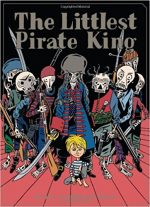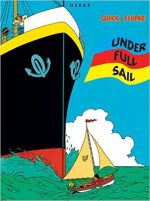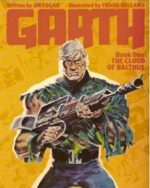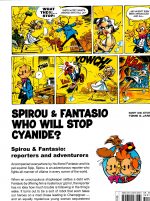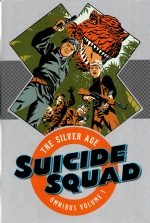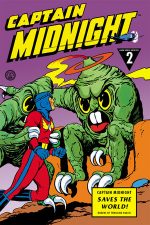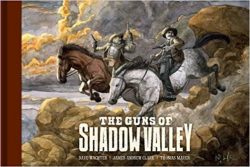
By James M. Clark, Dave Wachter & Thomas Mauer (Dark Horse)
ISBN: 978-1-61655-435-4
Win’s Christmas Gift Recommendation: Forward-Looking Traditional Fun You Must Not Miss… 9/10
Westerns are very much in the eye of the beholder. Some of my very favourites include The Seven Samurai, The Thirteenth Warrior and Outland …and not a six-gun or Stetson in the bunch.
Actually, the form’s all about tone and timbre: motivation and resolution you see; trappings and locations are not as important as the Why and the How…
And as such, they lend themselves perfectly to crossing genres such as detective thrillers or horror. A superb case in point is superbly enchanting superhero shocker The Guns of Shadow Valley.
Concocted by Dave Wachter, James Andrew Clark and letterer Thomas Mauer and originally disseminated as a web-comic which began in 2007, the stunning saga was eventually collected as a sturdy landscape format hardback tome (with attendant eBook edition). It is one of the moodiest, most beautifully realised tales you’ll ever see.
The chills start with a freakish attack on a couple of surveyors foolishly assaying isolated Shadow Valley before ‘Welcome to Malice’ introduces Bill Dawson, sheriff of that lonely outpost of civilisation and a man with a strange secret.
When superfast shooter Frank “Breakneck†Kelley hits town, the laconic lawman and his assistant “Killshot†prepare for a confrontation. Dean Cooper is an unmatchable marksman, and when using his 1874 Sharps Rifle is the most accurate and deadly long-distance shooter in the world.
However, the showdown goes down in a most unexpected manner and the permanently-drunk Kelley ends up in jail. Eventually Bill learns the speedster can outrun his own bullets and stays soused only so that he can slow down enough to interact with other people…
And not too far distant, an atrocity occurs. US Army Colonel Thaddeus Bale lost his left arm in the war and replaced it with a lethally multi-purposed artificial limb. A fanatical zealot, he runs a covert unit with special dispensation from President Grant to tackle problems and crises no decent soldier would countenance.
With his ruthless division of veteran soldiers and malignant metahuman servants Scorpion, Wurm and Shane Langston, Bale claims to be doing the Lord’s work and is getting ever-nearer to Malice, hunting an impossible dream hidden in the remote and forbidding region…
The cast and scope expand in ‘Incident at Holden Pass’ as a stagecoach is hit by something indescribable whilst at a nearby railroad navvy camp, cruel Chinese wizard Feng finally loses the trust and confidence of his super-strong disciple Shoushan.
Back in Malice meanwhile, blacksmith Clyde Elliot is showing off the properties of a strange mineral found in the valley. Clyde is a driven tinkerer and master maker, devising and building incredible devices to solve any conceivable problem. He’s never seen anything like the stone currently in his workshop…
If the sheriff knows what’s going on, he’s keeping it to himself, but that doesn’t stop him bringing Killshot and Breakneck with him when he inexplicably attacks a prison stagecoach to liberate a convicted felon.
Pearl Rivera is a gunfighter and gambler; risky careers for a woman but made a little easier because of her uncanny empathic abilities and talents as a human lie detector. Even she is unprepared for the effect of her runaway armoured coach when it smashes into the startled but ultimately unharmed oriental giant who has recently quit the railroad building business…
And Bale’s column gets closer, now transporting an unearthly child as the sole spoils of his many depredations…
‘Leave the Bottle’ offers hints into an ancient Indian tragedy that underpins all the mysterious events as Bale’s expedition reaches the valley and uncovers some of the mystery mineral. In Malice, wizened Indian outcast Kuecan the Crow haunts the main street whilst, in the desert scrub outside, Bale mystically confers with his true paymaster.
Robber Baron industrialist Thomas Percival Dumont is the most powerful man in America, a position gained by ruthless acts, devious planning and his powers of mind-manipulation. He wants to own and exploit whatever incredible energy-source rests in Shadow Valley and is now close to fulfilling his greatest ambitions. The wicked plotters are unaware that ferocious animal guardians afflicted by an ancient curse are watching them…
The black hats are the first to act as Bale’s sadistic multi-armed mercenary rides into town in ‘Tail of the Scorpion‘. The brutal carnage he inflicts in Malice is reflected at the rail camp after Bale hands over his juvenile prize to Feng, but answers are equally unforthcoming. The only real result is a drawing together of lawmen and outlaws in the beleaguered town. Dawson now notionally leads the strangest posse in the annals of the West…
A dawn-age prairie myth becomes chilling reality as the true history of the region unfolds in ‘The Crow, the Coyote, and the Eagle’ with a supernal primordial – and largely mythological – event re-deciphered by modern eyes when the foredoomed Neci Indians, (shapeshifters accursed for eternity and awaiting the return of their tribe’s spirit and soul) finally make their move just as ‘The Best Laid Schemes’ presages the beginning of The End…
Dawson finally comes clean about what he’s been hiding as the forces of evil converge on Malice and battle is joined…
The arcane action escalates to a cataclysmic, revelatory conclusion in ‘Fools of Time and Terror’ before a tantalising ‘Epilogue’ set decades later posits that even when it’s over, it ain’t over…
Along with a Foreword by Gabriel Hardman and Afterword from Dave Wachter, plus full creator biographies, this blockbuster book also offers a large and fulsome Cast of Characters feature providing informative backstory and insight on all the major – and most of the minor – players.
Grandiose, ambitious and utterly compelling, The Guns of Shadow Valley is the best Sci-Fi/Horror/Western/Superhero summer-blockbuster action movie never made. You’d be an absolute gol’ dang fool not to at least read the bloody thing as soon as you can.
™ & © 2014 Dave Wachter and James Andrew Clark. All rights reserved.





